-
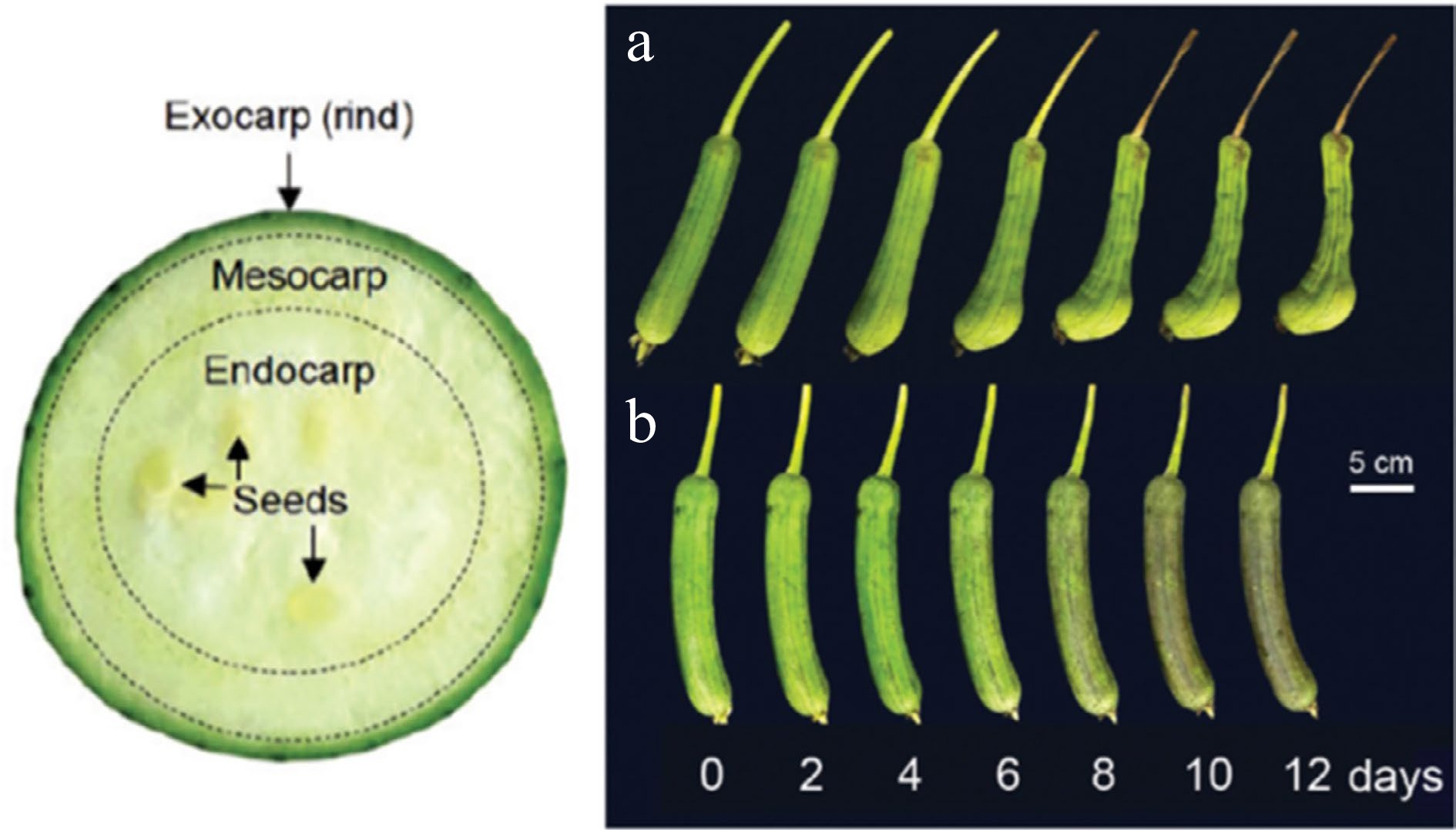
Figure 1.
Internal structure of immature sponge gourd fruit (left) and visual appearance of immature sponge gourd fruit stored at (a) 25 °C and (b) 5 °C[3].
-
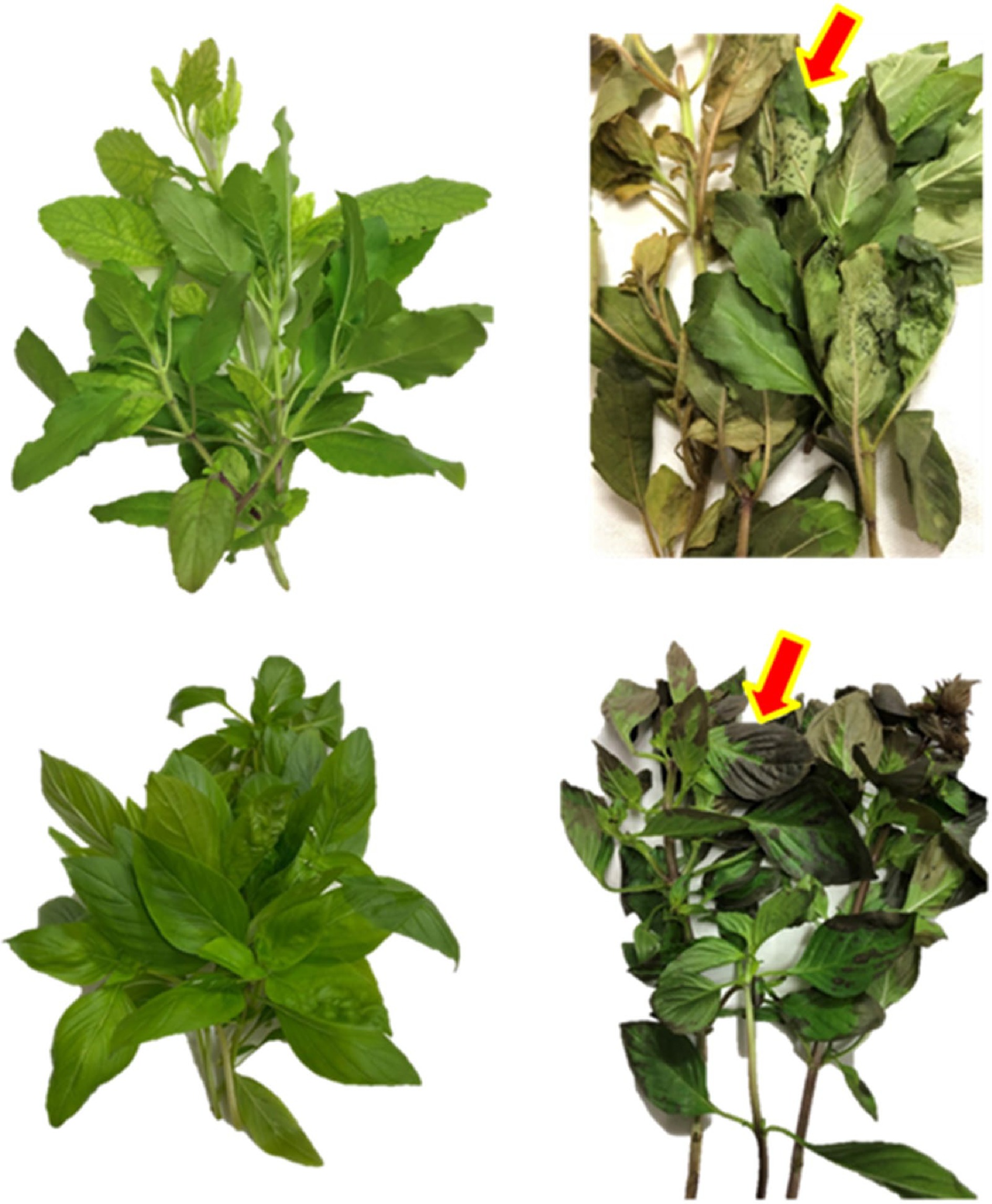
Figure 2.
Chilling injury symptoms generated on young leaves of holy basil (upper right) and sweet basil (below right) during 4 °C storage, compared to non-chilled leaves (left).
-
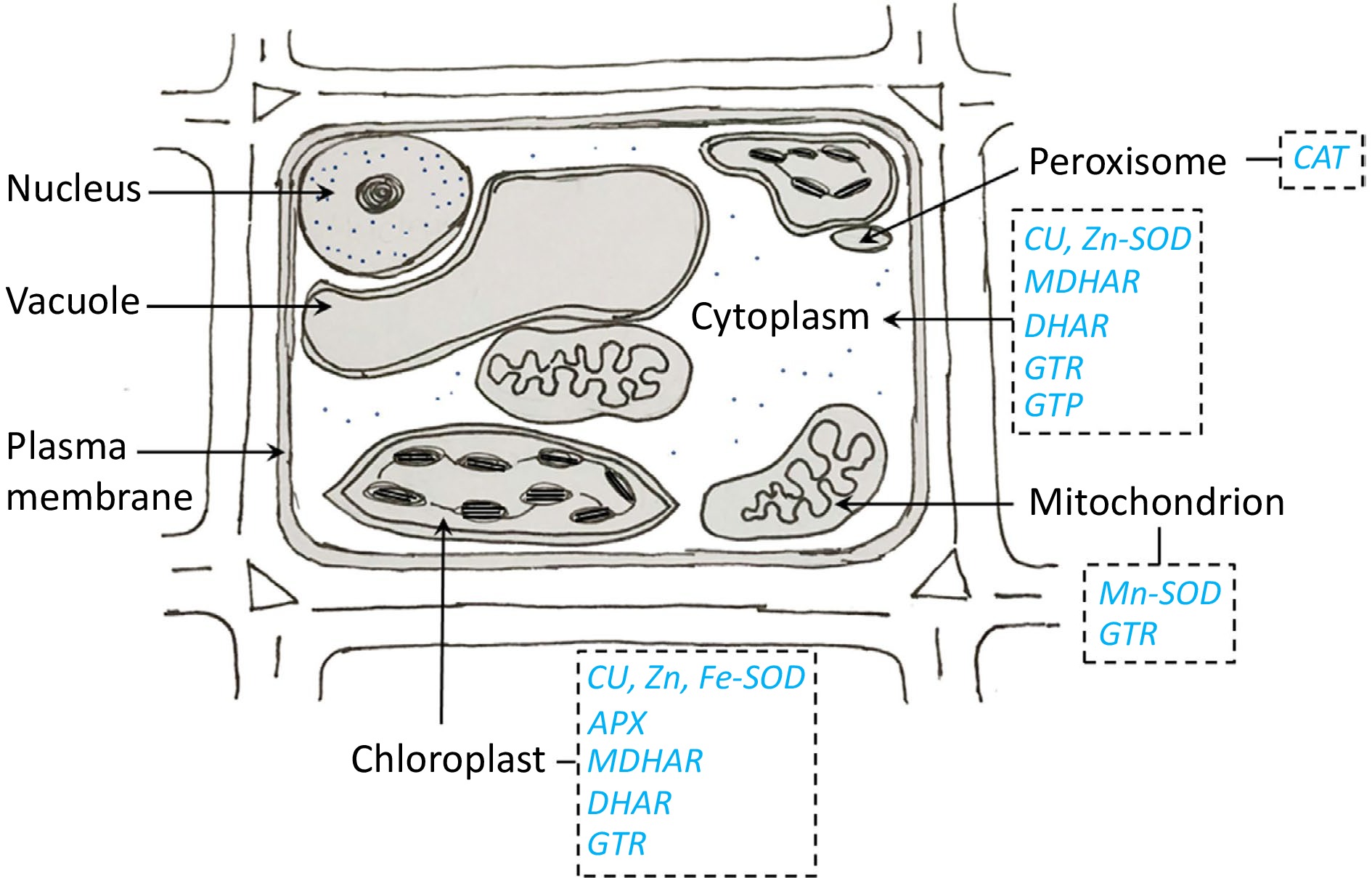
Figure 3.
Subcellular location of antioxidant enzymes in plant cells.
-
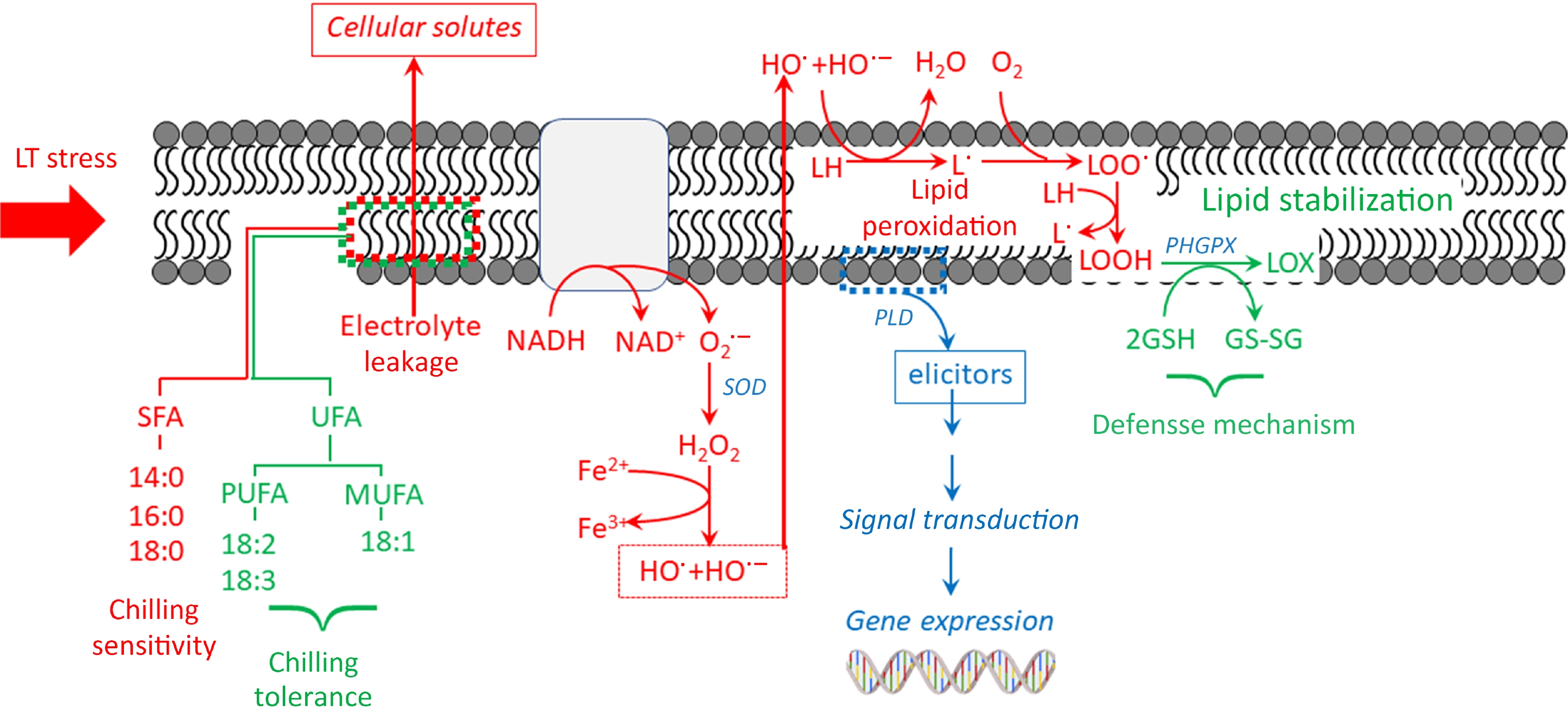
Figure 4.
Proposed mechanisms of membrane lipid components related to CI sensitivity and tolerance under low temperature.
-
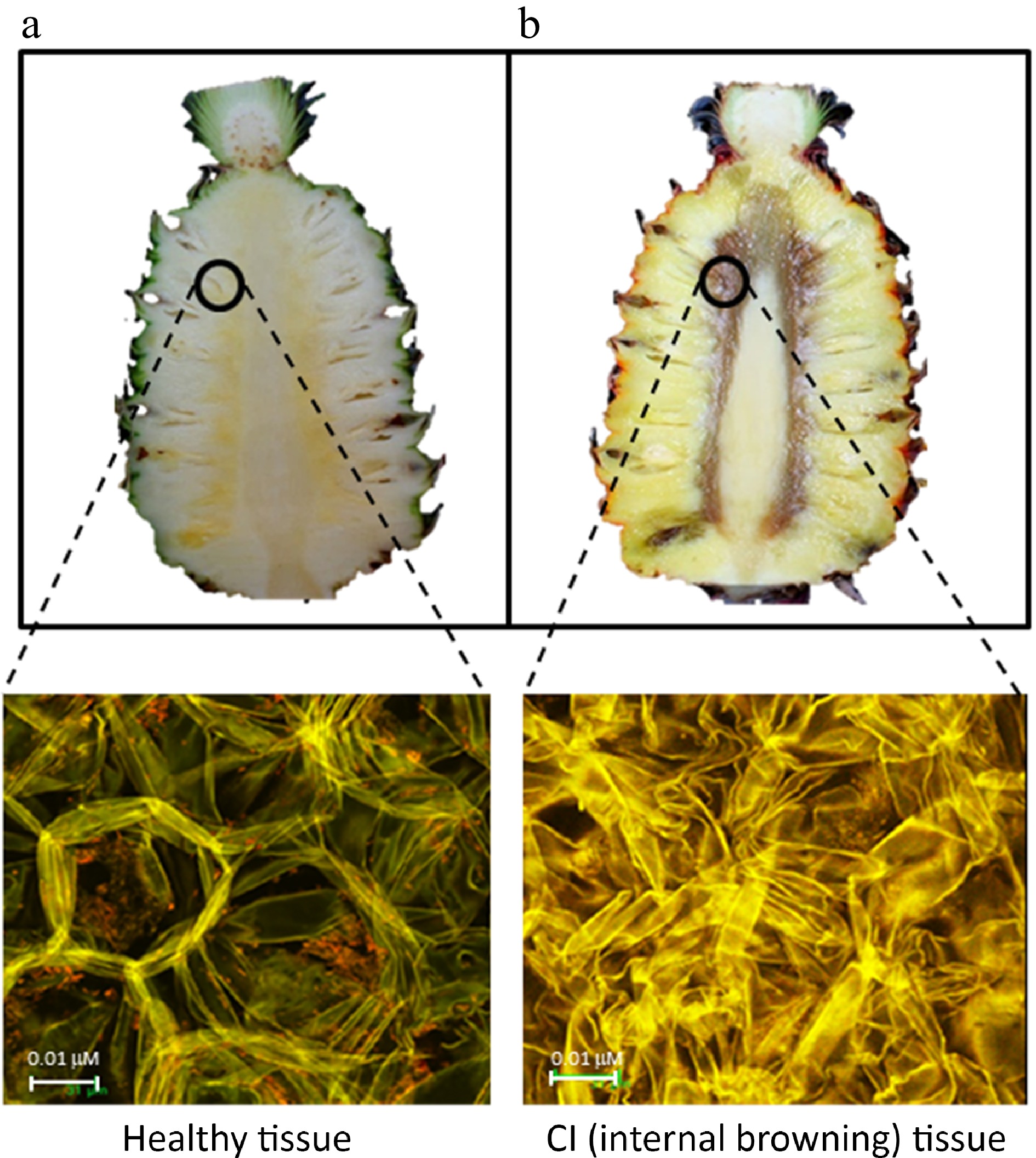
Figure 5.
Long section fruit-cut of Queen pineapple (upper) (a) on the harvesting day and (b) fruit stored at 13 °C for 14 d generating internal browning. The flesh tissues of a fruitlet adjacent to the core (in the circle) of fruit cross-sectioned and photographed under a confocal microscope (below) (sourced from Dr. Panipa Youryon with permission).
-
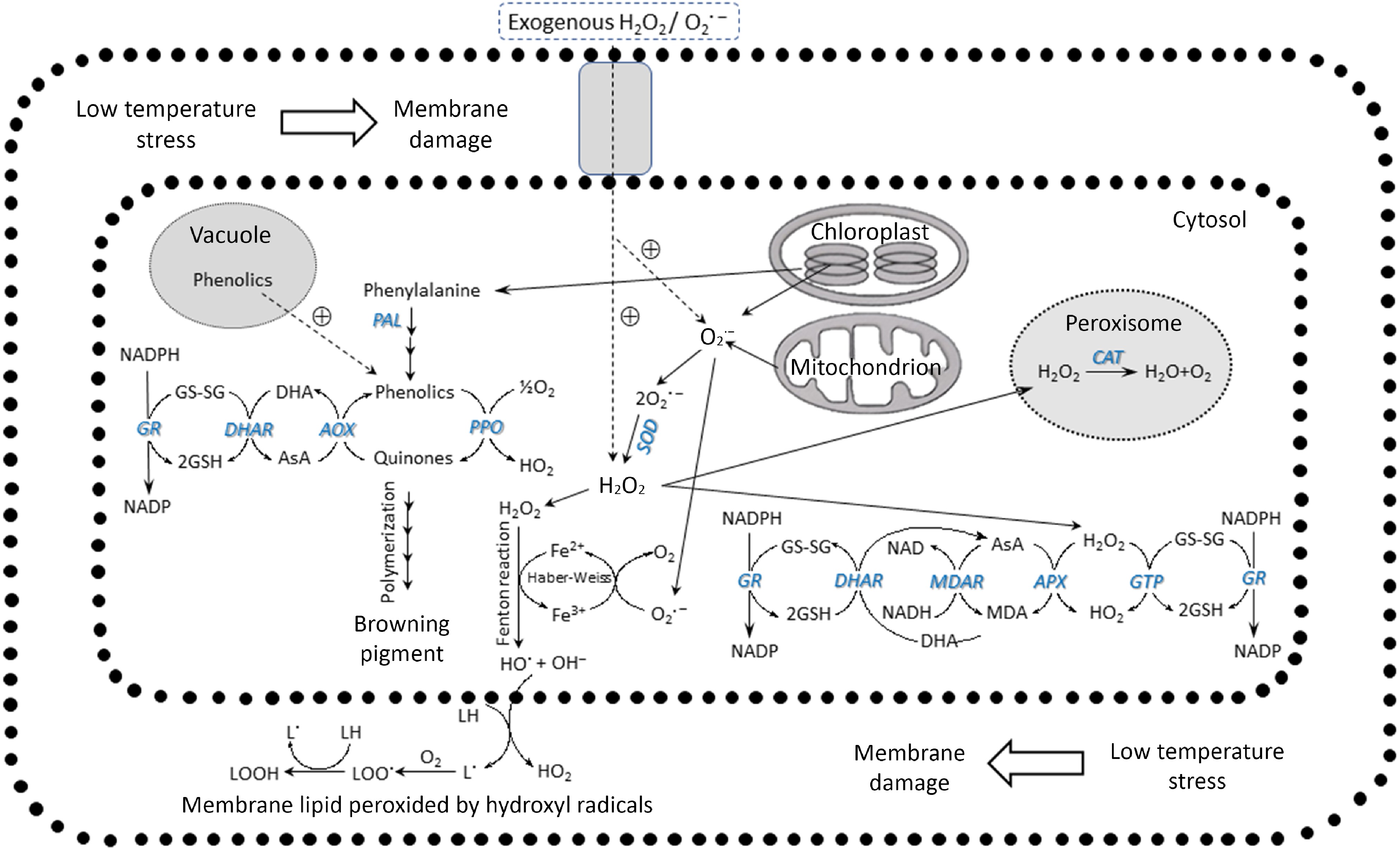
Figure 6.
ROS induced by low temperature and the enzymatic scavenging systems (modified from Noichinda et al.[24]).
-
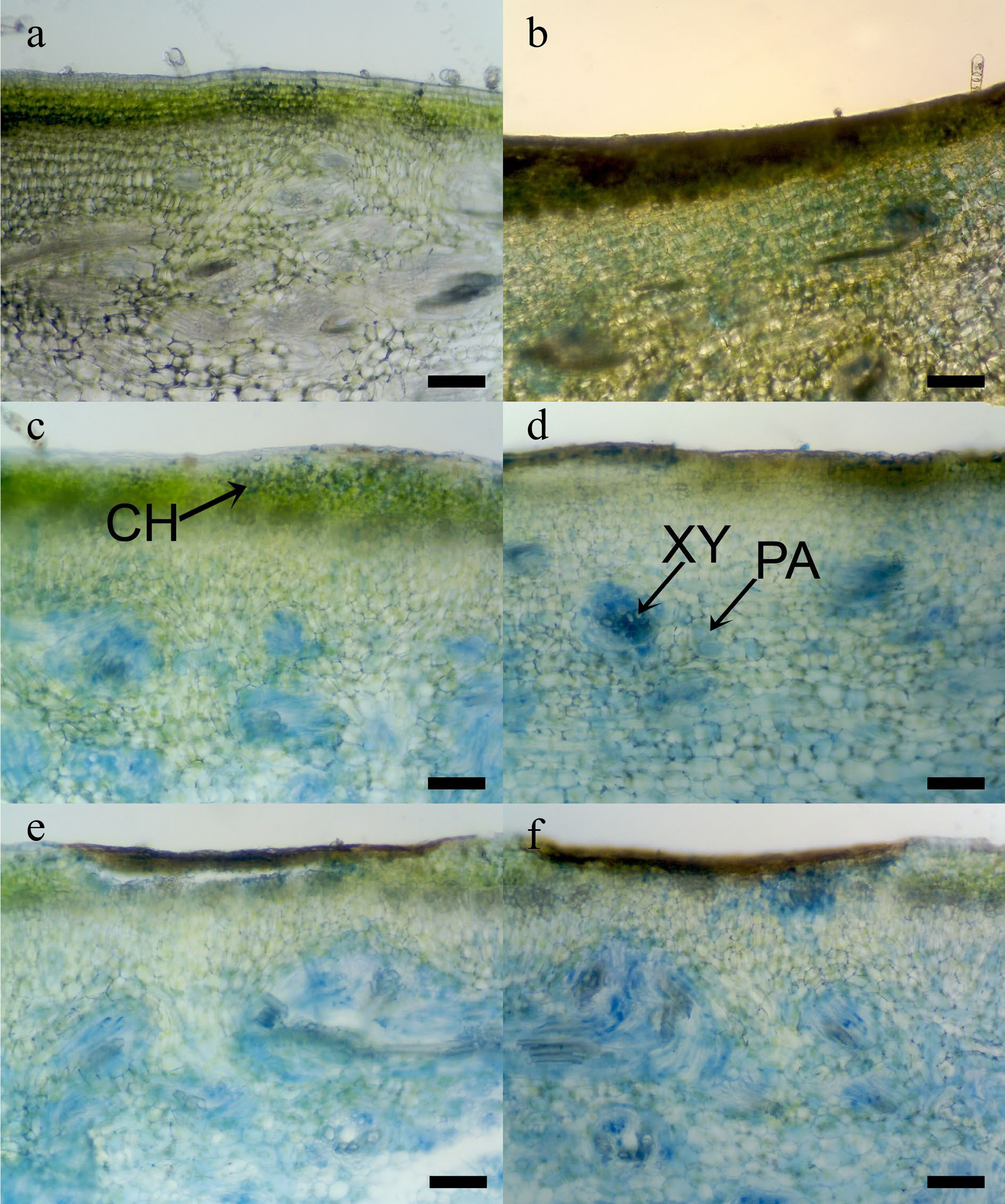
Figure 7.
Photomicrographs of internal chilling injuries (CI) symptoms in immature sponge gourd tissue after Evans blue dye staining, (a)−(f ) were 2, 4, 6, 8, 10, and 12 d during storage at 5 °C. Arrow pointed Evans blue dye staining area: CH = chlorenchyma, PA = parenchyma, and XY = xylem vessel. (Scale bar = 100 μm)[3].
-
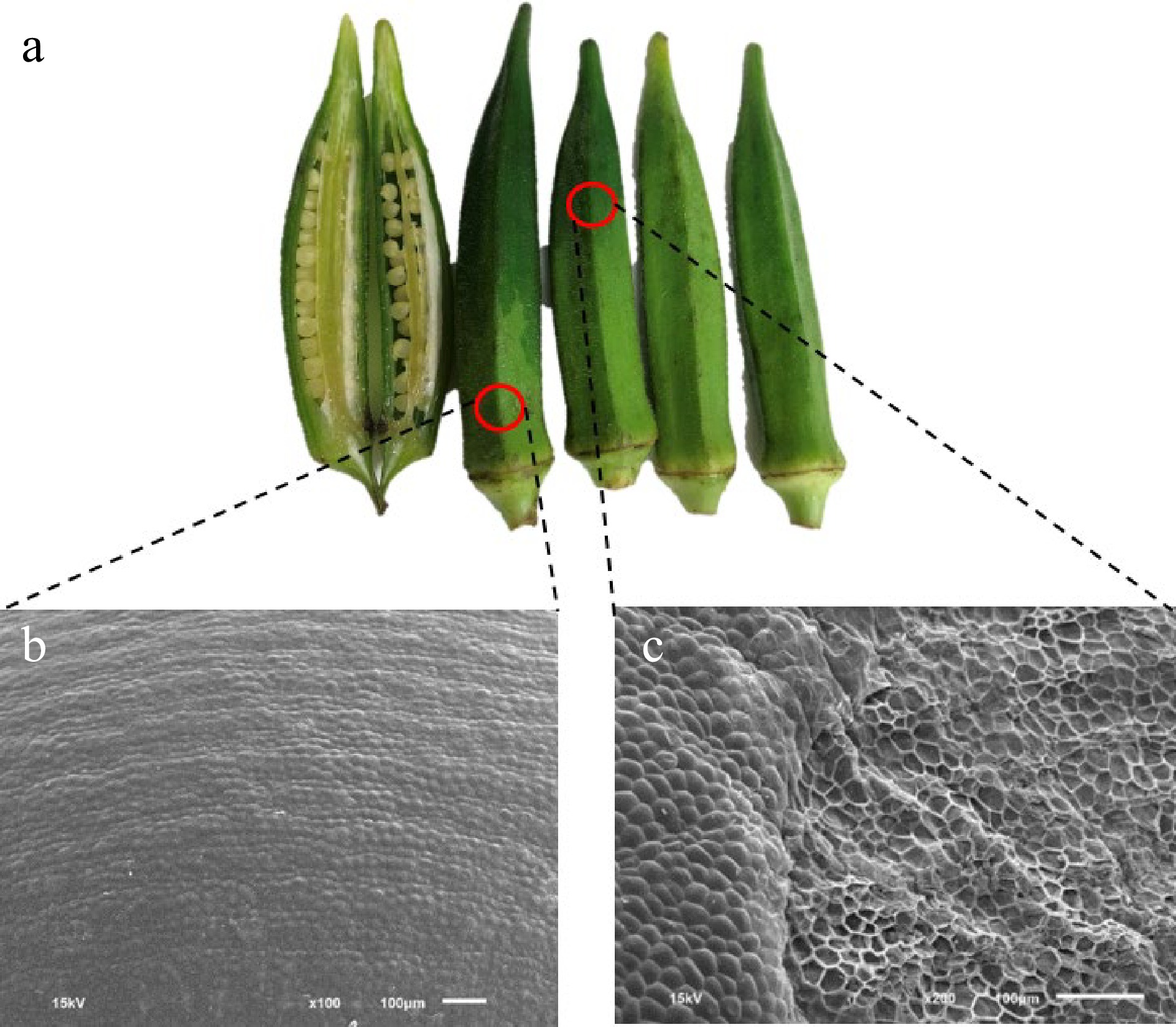
Figure 8.
CI appearances of (a) okra pods and (b) SEM pictures of the peel stored at 4 °C for 12 d at normal surface at 100× and at (c) the collapsed surface at 200× (sourced from Dr. Surisa Phornvillay with permission).
-
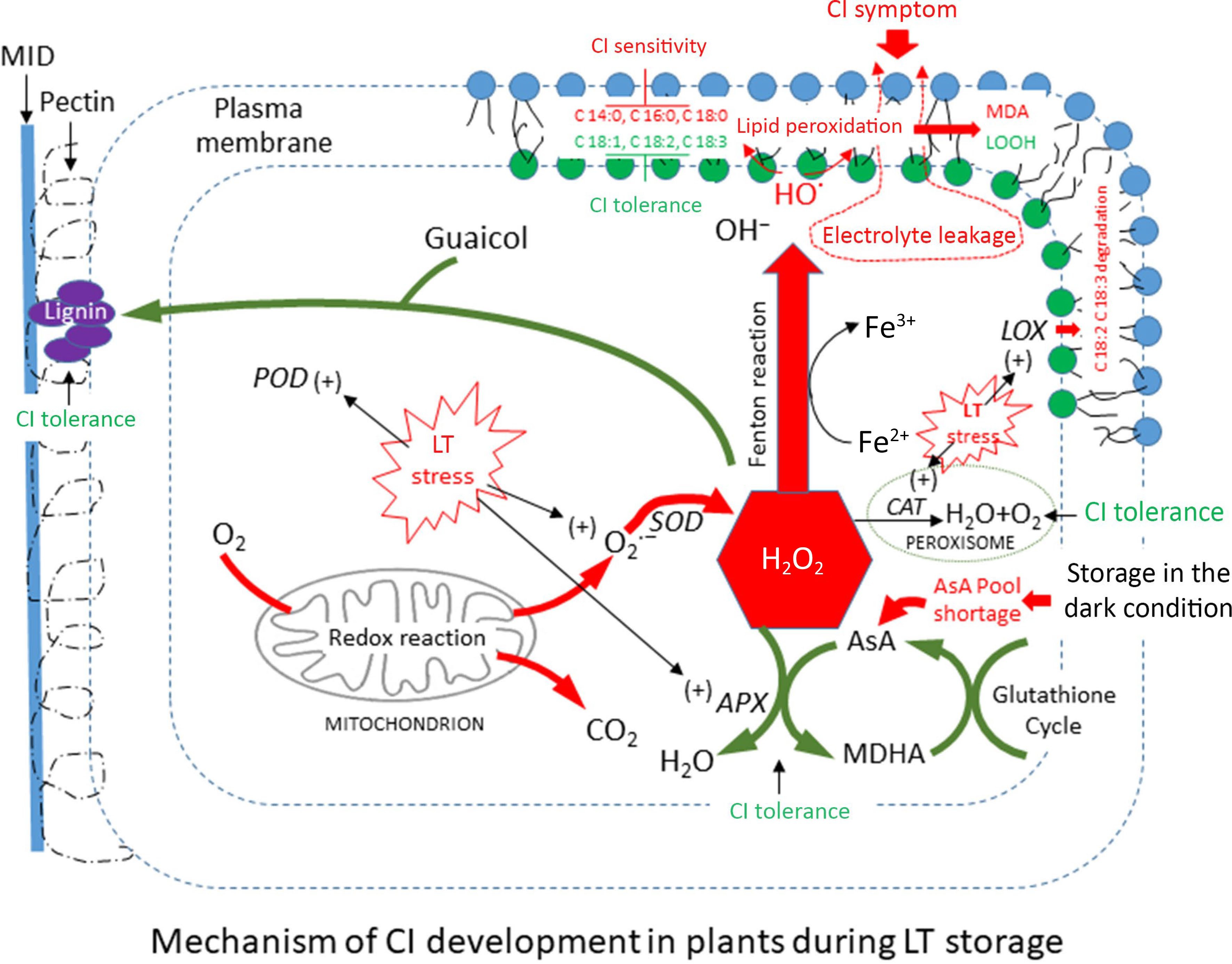
Figure 9.
The proposed chilling injury (CI) sensitivity and tolerance in immature sponge gourd fruit during storage at low temperature conditions: induce [+] and inhibit [–].
-
Horticultural
commodityCritical temperature
( °C)CI response
(+)Symptoms Ref. External Internal Banana 13−15 + Skin-darkening Poor ripening [6] Mango 13−15 + Senescent spotting, brown skin Poor ripening [7] Papaya 13 + + Surface pitting Water-soaking [8] Pineapple - Queen 11−13 + ++ Pink bract of fruitlets Internal browning [9] - Smooth cayenne 13 + Non-response Internal browning Ripe tomato 14 + Surface pitting Excessive softening, water soaking, aroma loss [10] Asparagus 0−2 + Dull, grey-green, limp tips [11,12] Bean 7 + Pitting and russeting [11] Eggplant 7 ++ Surface scald, Seed blackening [11] Gourd 10−13 ++ Surface pitting and browning Seed browning [3,11,12] Cucumber 8−10 ++ Surface pitting Water soaking [11,12] Zucchini 0 + Surface pitting [12] Summer squash 5−10 + Surface pitting and fungal rot Breakdown [13] Gac fruit 10−13 + Fruit shriveling, water soaking peel Water leathery like mesocarp and aril [14] Chili 7 + Surface pitting Placenta and seed browning [15] Okra 8−10 + Surface pitting Seed browning [16,17] Chinese kale 4−8 + Water soaking peel [18] Sweet basil 12 ++ Leaf browning, necrosis, decay, and leaf abscission [19] Holy basil 12 ++ Browning spots and water soaking leaves [20] Lemon basil 12 ++ Leaf blackening [5] (+) degree of susceptibility to CI. Table 1.
Critical temperature, CI response and symptoms of some tropical horticultural commodities.
-
Form Name Form Name O2·− Superoxide radical 1O2 Singlet oxygen OH· Hydroxy radical H2O2 Hydrogen peroxide RO· Alkoxyl radical ROO· Alkylperoxyl radical ROOH Alkylhydroperoxide ClO− Hypochlorite ion Fe5+O Periferryl ion Fe4+O Ferryl ion NO· Nitric oxide Table 2.
General ROS produced in plant cells under low temperature storage.
Figures
(9)
Tables
(2)